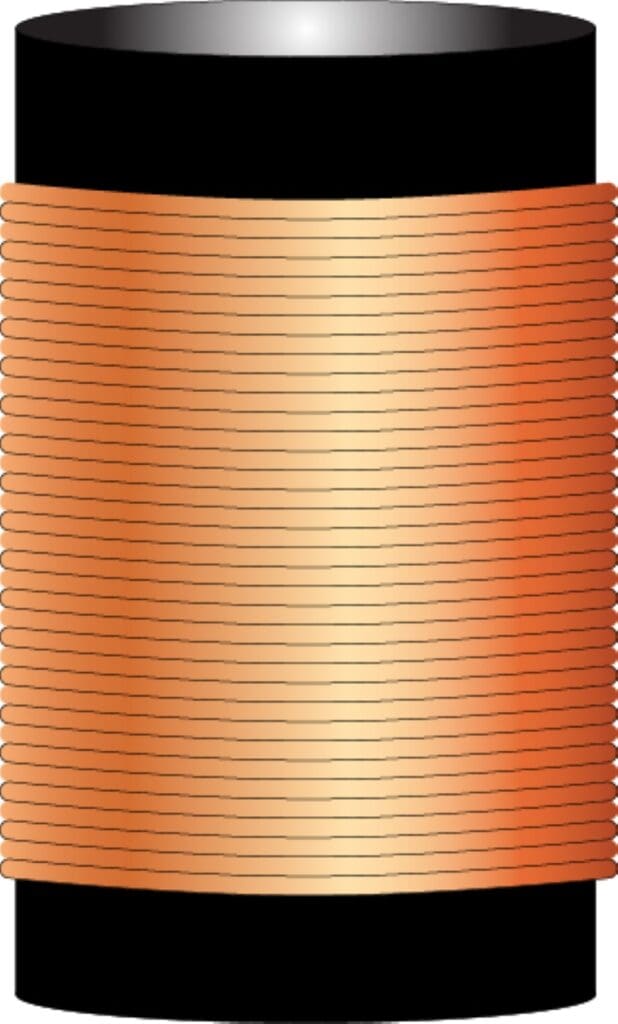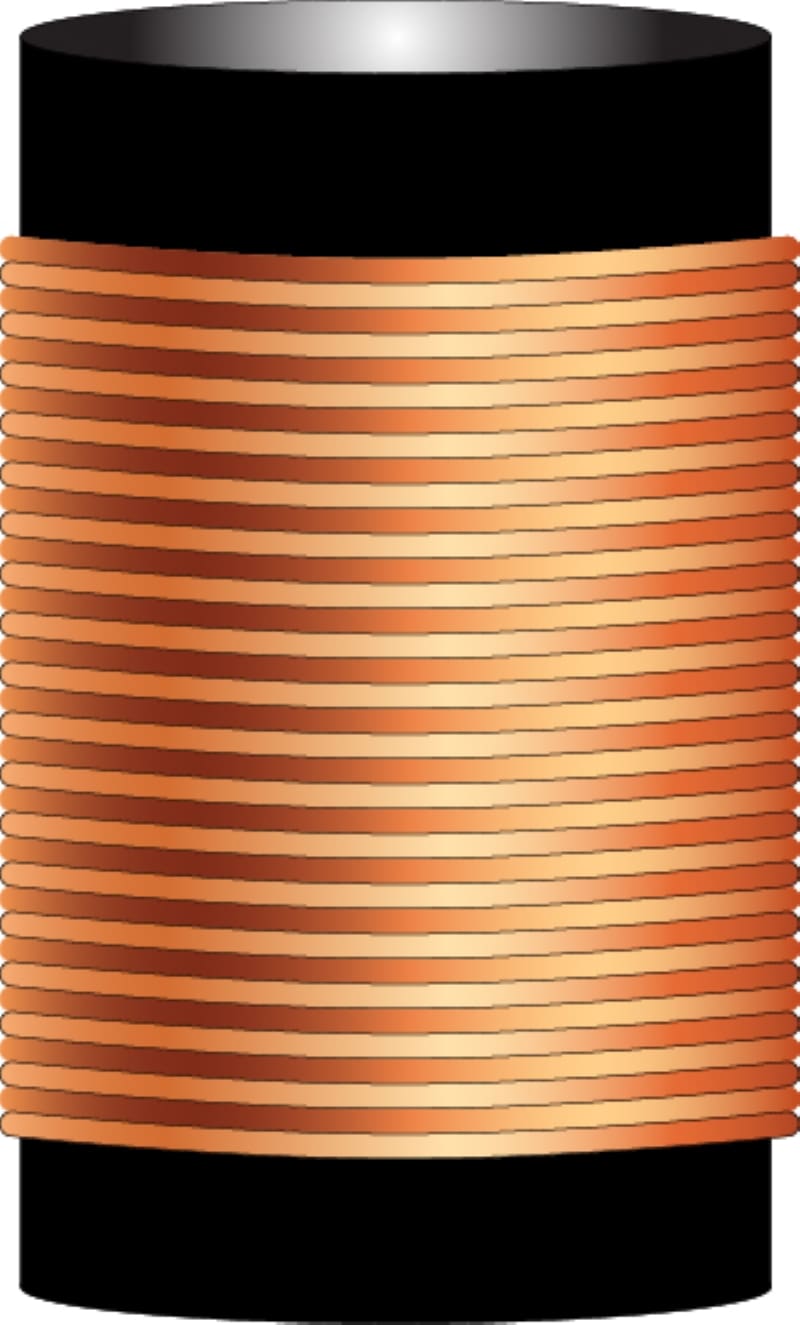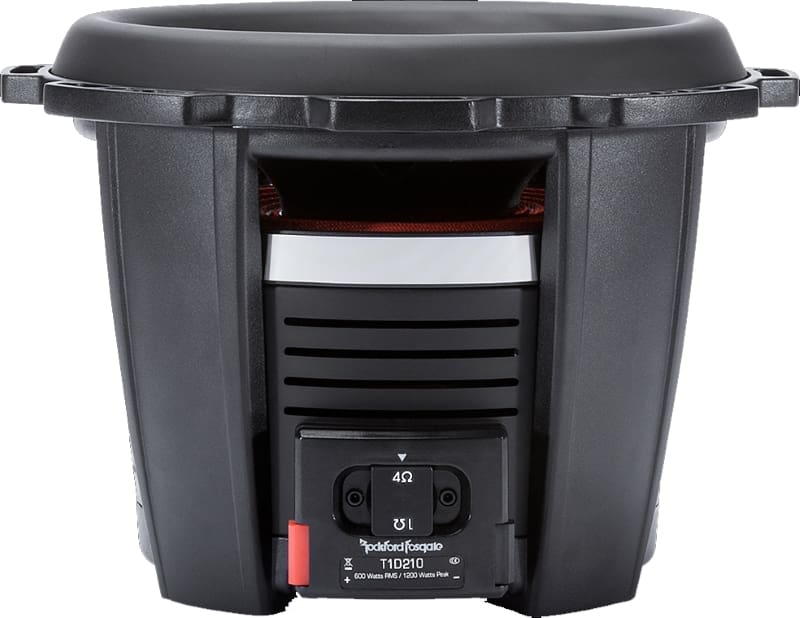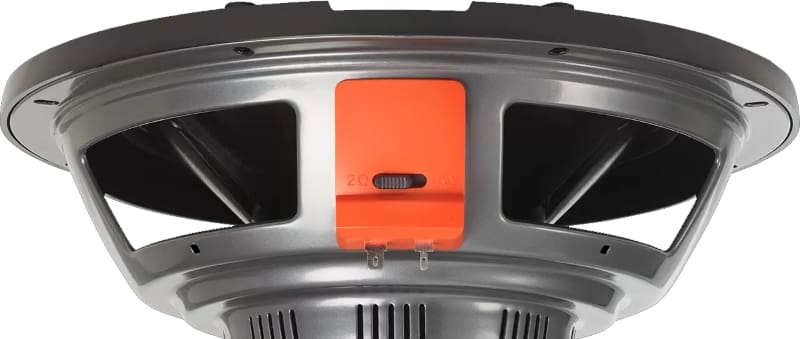We’re back to bust another car audio myth wide open. This article will discuss the myth that DVC subwoofers can handle more power than a single voice coil driver. After some research, it’s clear that consumers seem to think dual voice coil (DVC) subwoofers have the equivalent of two separate voice coil assemblies, allowing them to handle twice as much power as an SVC design. That’s not the case, so let’s explain how it all works.
Subwoofers and Voice Coils
Almost all car audio speakers use what’s known as a moving coil design. These speakers include everything from a 0.5-inch tweeter to a 3-inch midrange, a 6-inch woofer or an 18-inch subwoofer. In a moving coil speaker, the current passing through a voice coil winding causes the cone assembly to push away from or pull toward a fixed magnet.
The amount of current that passes through the voice coil determines the strength of the magnetic field around the voice coil winding. A stronger magnetic field moves the voice coil farther. In most cases, the limit regarding speaker cone travel depends on the selection of suspension components. The spider and cone surround should prevent the voice coil former from smashing into the back of the motor assembly. There’s only a surround in a tweeter, but excursion requirements are minimal.
All moving coil speakers are surprisingly inefficient. On the high side, maybe 2% of the energy from the amplifier is converted into sound, though it’s usually well under 1%. The rest of the energy heats the voice coil. So, if we send 100 watts of power to a subwoofer, the voice coil becomes a 99-watt heater. This wasted heat energy is why coils rated for more power are larger in diameter, taller or have more layers. The added mass allows the coil to absorb more heat energy.
Speaker Voice Coil Construction
The image below will serve as our basis for understanding how a voice coil works. Every voice coil starts with a former. The former material might be anodized aluminum, Kapton, fiberglass, stainless steel or paper. These tubes aren’t much different from what you’d find at the core of a roll of paper towels. The technician building the voice coil will wind a conductor made of copper or copper-clad aluminum around the former. It’s worth noting that more resistance can be a good thing in this instance, so copper isn’t always the best material choice. The technician winds the conductor onto the former to create a voice coil winding of a specific length and number of layers.

The image shown above represents a voice coil with a single winding. You’d find this in most moving coil speakers like tweeters, midrange drivers, woofers and many subwoofers. As there is a single conductor, the exposed voice coil wires connect to a pair of tinsel leads, which connect to the terminals on the speaker chassis or frame. These terminals have positive and negative labels applied. If a technician applies a DC voltage to the corresponding terminals in the same polarity as the labels, the speaker cone will move outward, away from the motor.
What Are DVC Subwoofers?
The technician will start winding two conductors instead of one to create a voice coil assembly with dual windings. As the former spins, the windings lay side by side. The total length of the winding and the number of layers are the same as if there were only one conductor. Put another way, DVC subwoofers have the same amount of copper as if it were an SVC design.

A Bit of Simple Math
Let’s assume that in the SVC coil assembly, the former has a diameter of 2 inches, and the winding is 3 inches tall. The circumference of the winding is 6.28 inches. If wound with 20 AWG wire with a diameter of 0.0254 inch, there would be a total of 118 wraps for a length of about 742 inches. If we calculate the total resistance of the wire, it comes out to 0.997 ohm.
So now we have a voice coil assembly with a single winding with a nominal resistance of 1 ohm. What if we wanted to make this a DVC subwoofer assembly?
As we mentioned, the technician would wind two conductors of the same size side-by-side around the former. Given that the total area to cover is the same, we have the same amount of wire on the voice coil. However, the length of each conductor would be half as long. So each voice coil would have a nominal resistance of 0.5 ohm. Once again, there is the same amount of copper on the winding, so the power handling is the same as if it had a single conductor. A DVC subwoofer offers no power handling benefit over an SVC driver.
Benefits of Dual Voice Coil Subwoofers
So what are the benefits of dual voice coil subwoofers? The answer is flexibility and nothing more. Your installer can wire the two voice coils in series or parallel or power each individually from different amplifier channels. In our example, let’s assume the woofer with a single winding can handle 200 watts of power continuously. Therefore, the dual voice coil subwoofer can handle the same 200 watts of power, given that the coil assembly has identical dimensions.
The impedance the DVC subwoofer presents to an amplifier can change, though. It can be a 1-ohm subwoofer if we wire the coils in series. It can be a 0.25-ohm subwoofer if we wire the coils in parallel. Alternatively, each voice coil could be connected to two separate amplifier channels, presenting each with a nominal impedance of 0.5 ohm. Each amplifier channel can provide up to 100 watts of power for 200 watts in total.
Multiple Voice Coil Configurations
Many car audio companies simplify the wiring options for their DVC subwoofers by including a switch or jumper block. For example, the Rockford Fosgate T1-Series subwoofers have a Selective Woofer Impedance Fuse Termination that uses a jumper block to let your installer select between series and parallel voice coil connections. The actual jumpers inside the removable block are fuses, hence their mention in the acronym.

While most car audio subwoofers are available in single- or dual-coil designs, other options exist. For example, Harman International has a patent on Selectable Smart Impedance technology that uses three 6-ohm voice coil windings on a single former along with a switch on the basket to select between a 2- or 4-ohm impedance. In the 2-ohm configuration, the three 6-ohm coils are wired in parallel. Two coils are wired in series and connected in parallel with the remaining 6-ohm winding in the 4-ohm configuration. The result is 4 ohms. Yes, more current flows through the single 6-ohm coil, but the total power handling remains consistent because they are all wrapped together in a single assembly.

Many subwoofers in factory-installed sound systems might use triple or quad voice coil configurations. The benefit is that several low-cost, low-power amplifiers can drive the subwoofer. For example, four 50-watt amplifiers will still provide 200 watts to a subwoofer but may not need significant power supply components that would be part of a single-channel 200-watt amp.
Less Conventional Subwoofer Voice Coil Designs.
A similar application is in high-power subwoofers used in SPL competitions. A competitor might be trying to provide 8,000 watts of power to the subwoofer using four separate 2,000-watt amplifiers. A separate amplifier can feed each coil. An alternative would be to wire two pairs of coils together and connect those to a pair of 4,000-watt amplifiers. Finally, all the coils could be wired in series (or parallel) and connected to a single amp.
Many years ago, Clarion introduced a speaker system called Full Digital Sound that featured midrange drivers with six voice coils. A technology for computer speakers limited to the 5 volts of power available from a USB port was the basis for the FDS design. The multiple voice coils allowed six amplifiers to drive the speaker to reach moderate volume levels.

Myths about DVC Subwoofers
Now you know how speaker manufacturers create subwoofer voice coils, and you understand why DVC subwoofers are no better or worse than a single voice coil design. The dual voice coil design might have more installation flexibility or options, but in terms of performance, there is no benefit. If you aren’t sure which subwoofer design will work best with your car audio amplifier, drop by a local specialty mobile enhancement retailer and talk with a product specialist. They can help you choose a solution that will optimize the power production capabilities of your amplifier while offering exceptional sound quality.
This article is written and produced by the team at www.BestCarAudio.com. Reproduction or use of any kind is prohibited without the express written permission of 1sixty8 media.


Leave a Reply